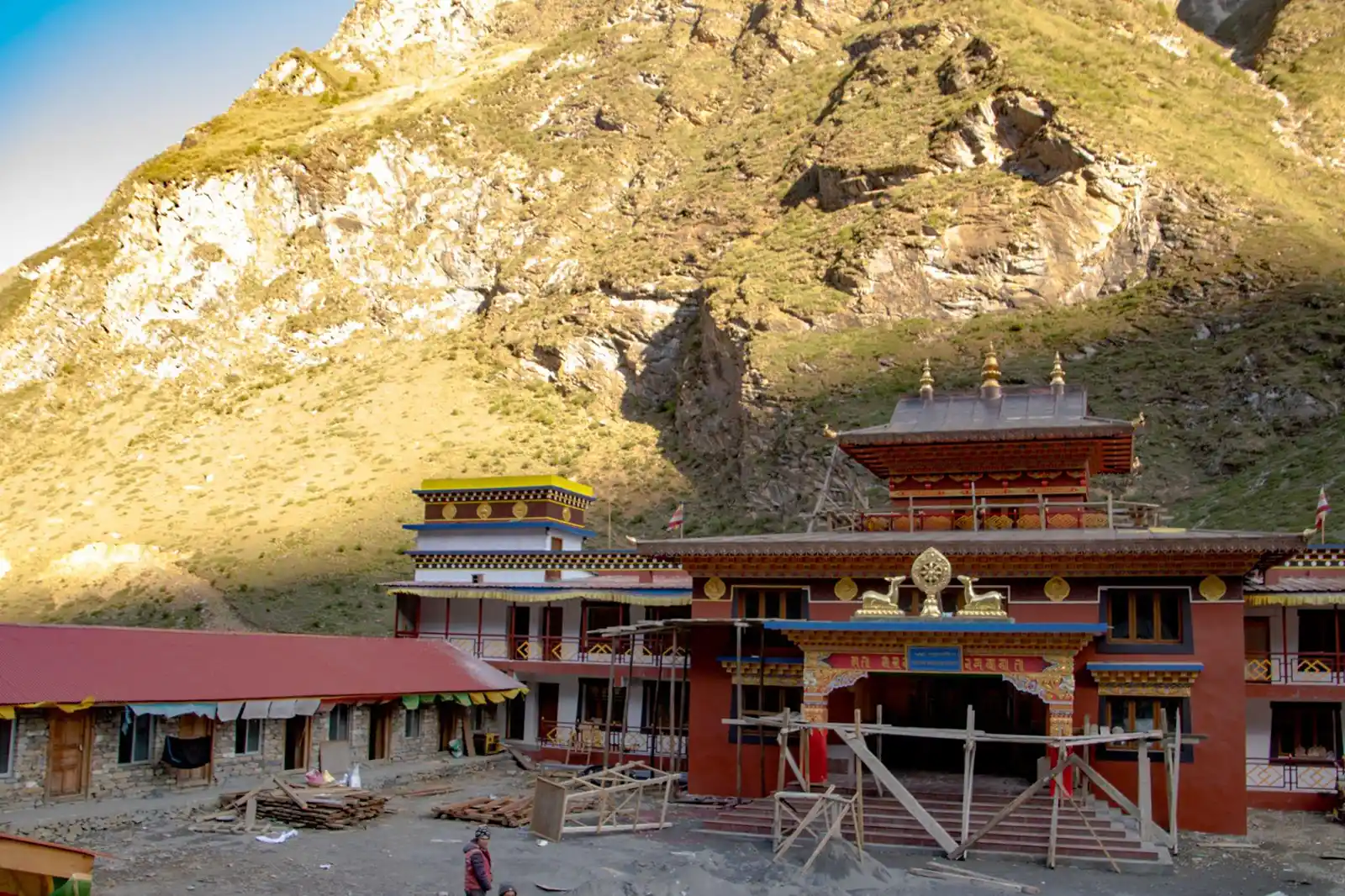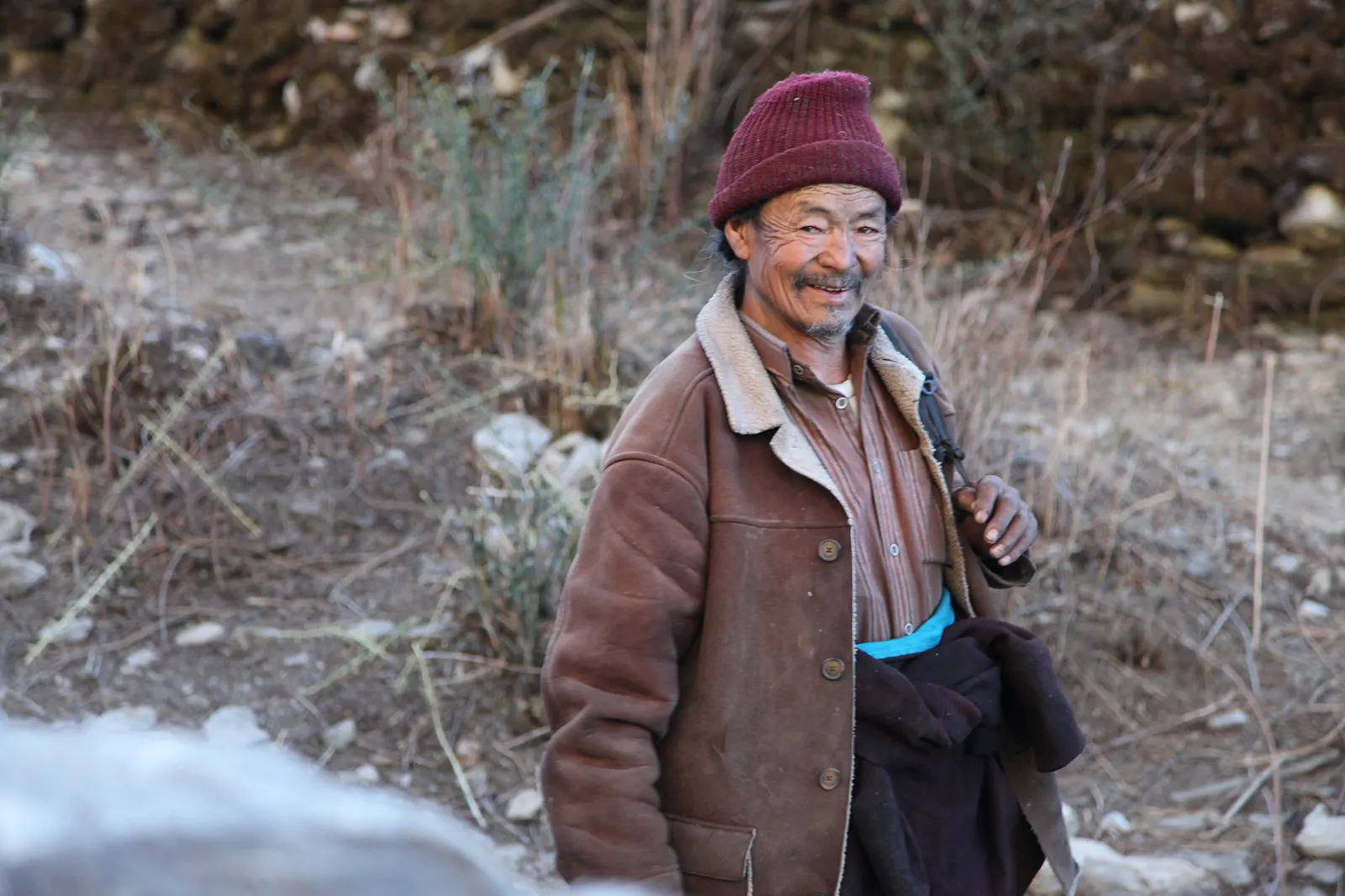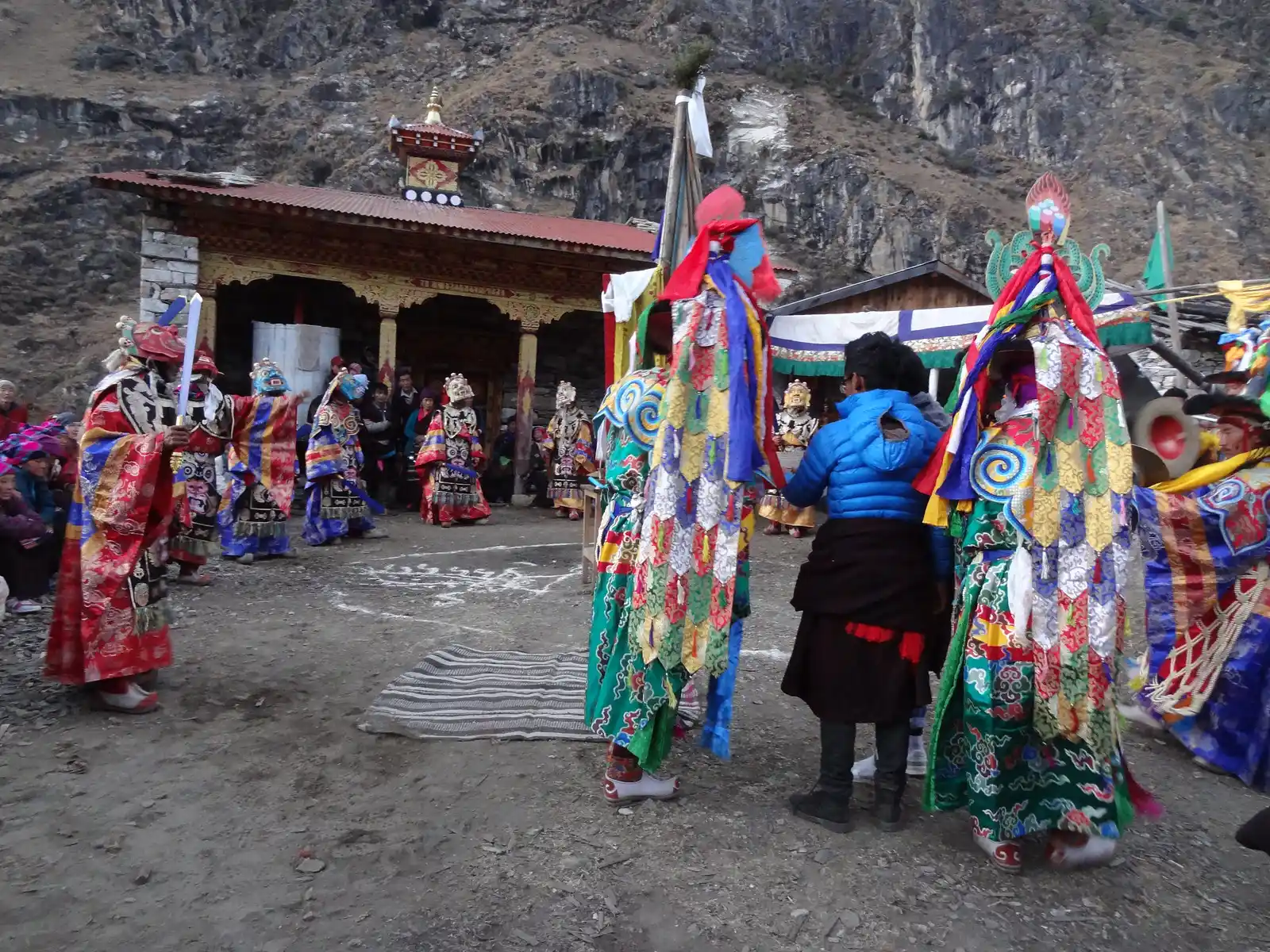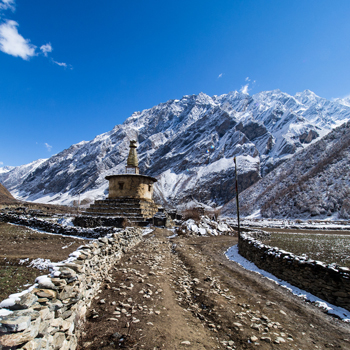The land of Yeti, Tsum Valley
- Sunday April 30, 2023
- 0
The Tsum Valley is a region in Nepal known for its unique culture and traditions. Despite the influence of modernity in many parts of Nepal, the people living in this valley have managed to preserve their traditional way of life. Many Tsumbas, the residents of this Valley, have reported seeing or finding signs of the methi, commonly known as the ‘Yeti’ or ‘Abominable Snowman.’ This adds to the mystique and allure of the region.
‘Tsum’ is derived from the Tibetan word ‘Tsombo,’ which means vivid. The Tsum Valley was historically a culturally distinct geographic area known as ‘Tsum Tso Checksums.’ This name translates to 13 provinces ruled as a single territory. This unique governance system helped maintain the valley’s residents’ cultural and social identity.

The tourism industry has opened to foreigners in recent years, allowing them to experience the region’s distinct culture and traditions. This has provided the residents with economic opportunities and helped preserve their traditional way of life. However, efforts are being made to balance tourism with conservation to protect the valley’s natural beauty and cultural heritage for future generations.
Tsum Valley:
Tsum Valley is a hidden gem located at 1905m at Lokpa to over 5093m at Ngala Dhojhyang on the Tibetan border, occupying an area of approximately 1663 sq. km. The Himal Chuli and Baudha Himal encircle the valley to the west, while the southern and northern parts are surrounded by Ganesh Himal and Sringi Himal, respectively. The valley comprises two remote village development committees: Chhekampar (Upper Tsum) and Chumchet (Lower Tsum).
Despite modernization sweeping most of Nepal, This valley has remained highly remote, with numerous ancient relics scattered throughout the area. The unique culture and traditions of the local people have been well-preserved, making it a fascinating destination for visitors seeking an authentic cultural experience. Interestingly, some residents of Tsum Valley claim to have seen or found signs of the mythical methi, also known as the ‘Yeti’ or ‘Abominable Snowman.’
Tsumbas – The people of Tsum Valley
The Thumbs, predominantly of Tibetan origin, possess a distinctive dialect and are commonly referred to as “Bhote” or “Bhotiya.” The practice of polyandry is widespread in Tsubas families, contributing to their reputation for efficient management and greater prosperity relative to other families.
According to elders, a group of nomads known as Tamba Setto migrated to the valley from Bichour in the Lamjung district many centuries ago. The group was connected with Bu Phaujyas, who came from Tibet to spread Buddhism. It is believed that the renowned Buddhist saint Milarepa meditated in the mountain caves of Tsum Valley.

Buddhism holds an important place in the hearts of people in Tsum Valley. They honor and worship Buddha, Guru Rinpoche (Padmasambhava), and several bodhisattvas. They display prayer flags, Khata, or mani walls and light butter lamps in monasteries and believe in the reincarnation of lamas. The people follow various rituals and festivals against evil spirits but do not practice animal sacrifice to please their deities.
Believes and Rituals:
The people of Tsum Valley believe in reincarnation, meaning that birth and death are viewed as cyclic events rather than absolute endpoints. The arrival of a new child is celebrated as a social occasion that brings friends and family together, with the older members of the household taking care of the newborn.
At the same time, the adults carry on with their work. In Tsum Valley, winter is the preferred season for weddings since there is ample time for celebration. While older people traditionally arranged marriages for young people, the youth have started choosing their partners.

The funeral customs of Tsum Valley are fascinating. When someone dies, their body is left untouched for several days until a Lama visits. The type of burial is then determined by the astrological chart of the deceased person, with the options being cremation, ground burial, water burial, or sky burial.
Festivals:
Tsumbas, the inhabitants of Tsum Valley, are known for their joyous nature and vibrant celebration of festivals and rituals. These festivals are a means of making merry and help preserve age-old customs and traditions. The most important festival in Tsum Valley is Lhosar, which marks the beginning of the New Year. However, the Tsumbas of Lower Tsum Valley celebrates it earlier than those in Upper Tsum.
Dhaching, also known as the horse riding festival, is another major festival celebrated in December/January. Men participate in horse racing while women sing and dance in the evening. Saka Dawa is another important festival when rituals are performed at local monasteries and nunneries, and people observe a day-long fast.
To explore Tsum Valley, trekkers can start from Arughat in the Gorkha district and follow the Manaslu Circuit route for the first few days. The trek can be extended by including the Manaslu Circuit or linked with the Annapurna Conservation Area before concluding at Besi Sahar in Lamjung.
Why Trek to Tsum Valley
Tsum Valley is an undiscovered destination in Nepal that provides an unparalleled and authentic experience to travelers who want to explore off the beaten track. It is a pristine environment that attracts adventure seekers, nature enthusiasts, and culture lovers to witness the untouched beauty of the Himalayan landscape. Trekking to Tsum Valley is an unforgettable experience that allows travelers to immerse themselves in the local way of life and gain an understanding of the rich cultural heritage of the Tsumba people.
The valley is a natural wonderland, offering stunning mountain peaks, glaciers, waterfalls, hot springs, and crystal clear rivers among Nepal’s most beautiful. The trekking route takes visitors through remote villages, hidden monasteries, and ancient caves, where they can witness the rich cultural traditions of the Tsumba people. Traditional festivals, rituals, delicious local cuisine, and warm hospitality provide an authentic glimpse into its residents’ unique way of life.
Moreover, trekking to Tsum Valley is a perfect opportunity to escape the chaos of modern life and embrace the peaceful environment of the Himalayas. The valley is highly remote, and modernization has not yet reached it. Therefore, visitors can experience a sense of tranquility and serenity that is hard to find elsewhere. With its awe-inspiring natural beauty, unique cultural heritage, and peaceful environment, Tsum Valley is an unmissable destination for anyone who wants to experience the true essence of Nepal.
Things to know before the Tsum Valley Trek
Trekking to Tsum Valley provides a one-of-a-kind experience with stunning mountain views and a chance to discover a rich cultural heritage. Nevertheless, before embarking on this adventure, important factors must be remembered.
To begin with, Tsum Valley is a remote area requiring a special permit to visit. Before entering the valley, visitors must obtain a Restricted Area Permit (RAP) and a Manaslu Conservation Area Permit (MCAP). It is recommended to seek the help of a local trekking agency or guide who can assist with obtaining the necessary permits and transportation and accommodation arrangements.
Secondly, Tsum Valley is situated at high altitudes, with some parts of the trek reaching over 5000 meters. It is critical to prepare both physically and mentally for the trek, and visitors should consider acclimatization by spending a few days at lower altitudes before beginning the trek. Additionally, warm clothing, high-quality trekking boots, and other equipment, such as sleeping bags and poles, should be packed.
Lastly, visitors to Tsum Valley should honor the local culture and traditions. Tsum Valley is a holy place for many Buddhists, and visitors should dress modestly and behave respectfully in monasteries and other religious sites. Visitors should also avoid littering and follow appropriate waste disposal practices since the region is environmentally delicate. Adhering to these guidelines gives visitors a memorable and responsible trekking experience in Tsum Valley.
Secret Facts of Tsum Valley
Tsum Valley is a place of great intrigue and uniqueness. One of its most fascinating features is its association with the renowned Buddhist saint Milarepa. Legend has it that Milarepa meditated in the mountain caves of Tsum, attracting Buddhists from all over the world who now visit the valley as a pilgrimage site.
Tsum Valley’s isolation from the modern world is another fascinating aspect of the area. Due to its remote location, the valley remains one of Nepal’s most preserved and untouched areas. The local people have successfully maintained their traditional way of life, culture, and customs, adding to the valley’s charm and uniqueness.
Furthermore, Tsum Valley is known for its distinctive dialect and language. The Thumbs, the primary inhabitants of the valley, speak a dialect with Tibetan roots, making their culture even more mysterious and captivating to outsiders who explore Tsum Valley.






